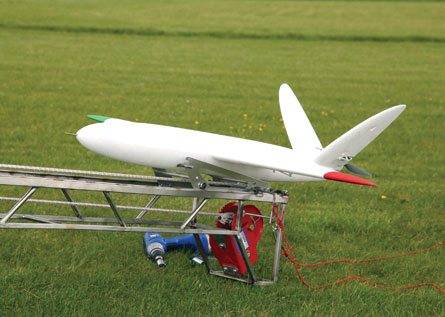Engineers at the UK's University of Southampton have designed and flown what it claims is the world's first "printed" aircraft, which could revolutionize the economics of aircraft design.
The Southampton University Laser Sintered Aircraft (SULSA) is a UAV whose entire structure has been printed, including wings, integral control surfaces and access hatches. It was printed on an Eos Eosint P730 nylon laser sintering machine, which fabricates plastic or metal objects, building up the item layer by layer.
No fasteners were used and equipment was attached using "snap fit" techniques so that the aircraft can be put together without tools in minutes, said the university.
The project team worked in partnership with 3T RPD, which undertook the manufacture and detailing of the design, as well as supplying laser sintering expertise.
 |
|---|
©2011 Billypix |
The electric-powered aircraft has a 6.6ft wingspan and a top speed of nearly 100mph, but when in cruise mode is almost silent. It is also equipped with a miniature autopilot.
The SULSA project has been led by Professors Andy Keane and Jim Scanlan from the university's Computational Engineering and Design Research group.
Scanlan said: "The flexibility of the laser sintering process allows the design team to revisit historical techniques and ideas that would have been prohibitively expensive using conventional manufacturing. One of these ideas involves the use of a Geodetic structure.
"This type of structure was initially developed by Barnes Wallis and famously used on the Vickers Wellington bomber which first flew in 1936. This form of structure is very stiff and lightweight, but very complex. If it was manufactured conventionally it would require a large number of individually tailored parts that would have to be bonded or fastened at great expense."
Keane added: "Another design benefit that laser sintering provides is the use of an elliptical wing planform. Aerodynamicists have, for decades, known that elliptical wings offer drag benefits. Laser sintering removes the manufacturing constraint associated with shape complexity and in the SULSA aircraft there is no cost penalty in using an elliptical shape."
SULSA is part of the EPSRC-funded DECODE project, which is employing the use of leading edge manufacturing techniques, such as laser sintering, to demonstrate their use in the design of UAVs.
Source: Flight Daily News























